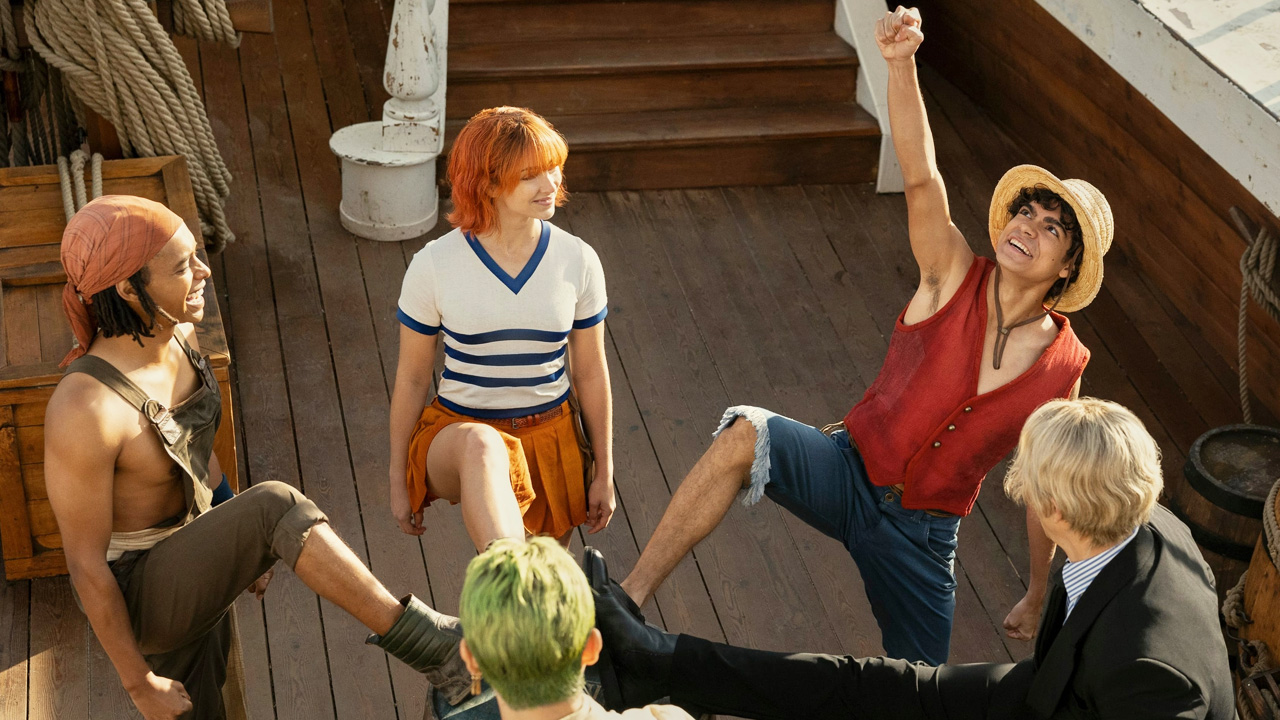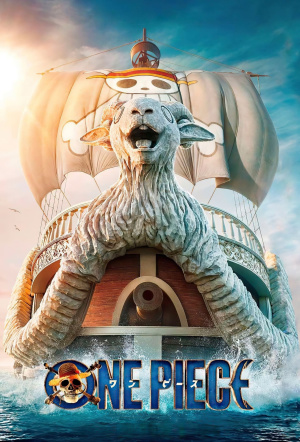Erratic, colourful, chaotic: Netflix’s One Piece brings anime pirates to life

Bringing an enormously popular manga and anime adventure into live-action zaniness, Netflix’s One Piece adaptation is zesty, fun, and erratic, says critic Luke Buckmaster.
When we think about pirate stories we tend to recall swashbuckling images: climbing the mast, walking the plank, clanging swords. So it makes sense that One Piece, Netflix’s live action adaptation of the long-running manga of the same name, aims to create a giddy kind of energy. Like the show itself is leaping for a swinging vine, or the other side of a dangling broken bridge, or engaging in some other act of vertiginous bravado.
By the end of the fourth episode (all I’ve seen so far) I thought: this show’s quite good—zesty and fun. If I was a teenager or young adult I might’ve loved it. Director Marc Jobst opens the first episode by sliding a virtual camera along a mustard-tinged map, while Ian McShane’s narrator introduces “a world like no other”—ironically sounding like he’s setting up a narrative seen countless times before. In an unbroken image, vision of the map smoothly segues into a body of actual water upon which dozens of ships are parked. McShane describes this universe as “brimming with mystery and teeming with danger.”
Before we hit the seas, there’s a good old fashioned execution. In front of a huge audience a politician belts out a speech about a new era of peace and how the tyranny of lawbreakers shall end toot suite. But the imminent death of Gold Roger—a smirking pirate who doesn’t look bothered about exiting the mortal coil—only spurs onlookers into action.
“My treasure is yours to find,” the pirate yells, his words catnip for the hoard-hungry crowd. They respond like the characters in It’s a Mad, Mad, Mad, Mad World, spurred into frenzy by a dying man who famously tells them there’s loot buried in a park under “a big W.” Except the group in this series is far bigger. So big the race to find the treasure in them thar oceans kicks off the true dawn of the pirate era and marks an event that will “change the world forever.” The prize they’re looking for is called One Piece.

The closest the series has to a protagonist is Luffy (Iñaki Godoy), a thin young man in a straw hat who talks up the pirating profession: love that sea breeze, those endless horizons, a sense of freedom. When Luffy gets in a fight early on, a strange thing happens: his body stretches like Mister Fantastic, contorting in all sorts of crazy directions. We learn he developed superhero skills after eating “Devil Fruit.”
Luffy forms a posse dubbed the “Straw Hat pirates,” its other members including the thief Nami (Emily Rudd) and swordsman Roronoa Zoro (Mackenyu). The latter is introduced in a forest-set sword fight that takes place inside a double ring of burning candles, because…atmosphere! By this (early) point you know the show’s erratic and is going to throw all sorts of crazy crap at you. Including its eclectic and showy production design—not quite gaudy but getting there.
Iñaki Godoy’s Peter Pan-ish performance is blithely exaggerated, tapping into a heightened reality, rendering a cartoon character in human form. Emily Rudd and Mackenyu hit a lower key, though plenty of the supporting characters are agitated and kooky. Among them’s Buggy (Jeff Ward), a ghastly Joker-like clown who seems to have embraced the “whole world’s a stage” philosophy, twisting it for his own freakish reality. He’s imprisoned an entire town, made everybody bit parts in a crazy circus act.
The heroes inevitably find themselves in hot water and escape by the skin of their teeth—from Buggy and at various other points. Unsurprisingly, that initial blast of high-octane energy stretching across most of the first episode isn’t sustained across hours of runtime. But the inevitable slower periods still feel like barely controlled chaos, tinkering on the precipice of bedlam, perched at the edge of the plank. Despite condensing an exhaustive source material (a limited edition version of the manga, released last year, was billed as “the longest book in existence“) the plotting feels random and anchorless. But not in a terrible way—more cheerfully adrift than scrambled.


















